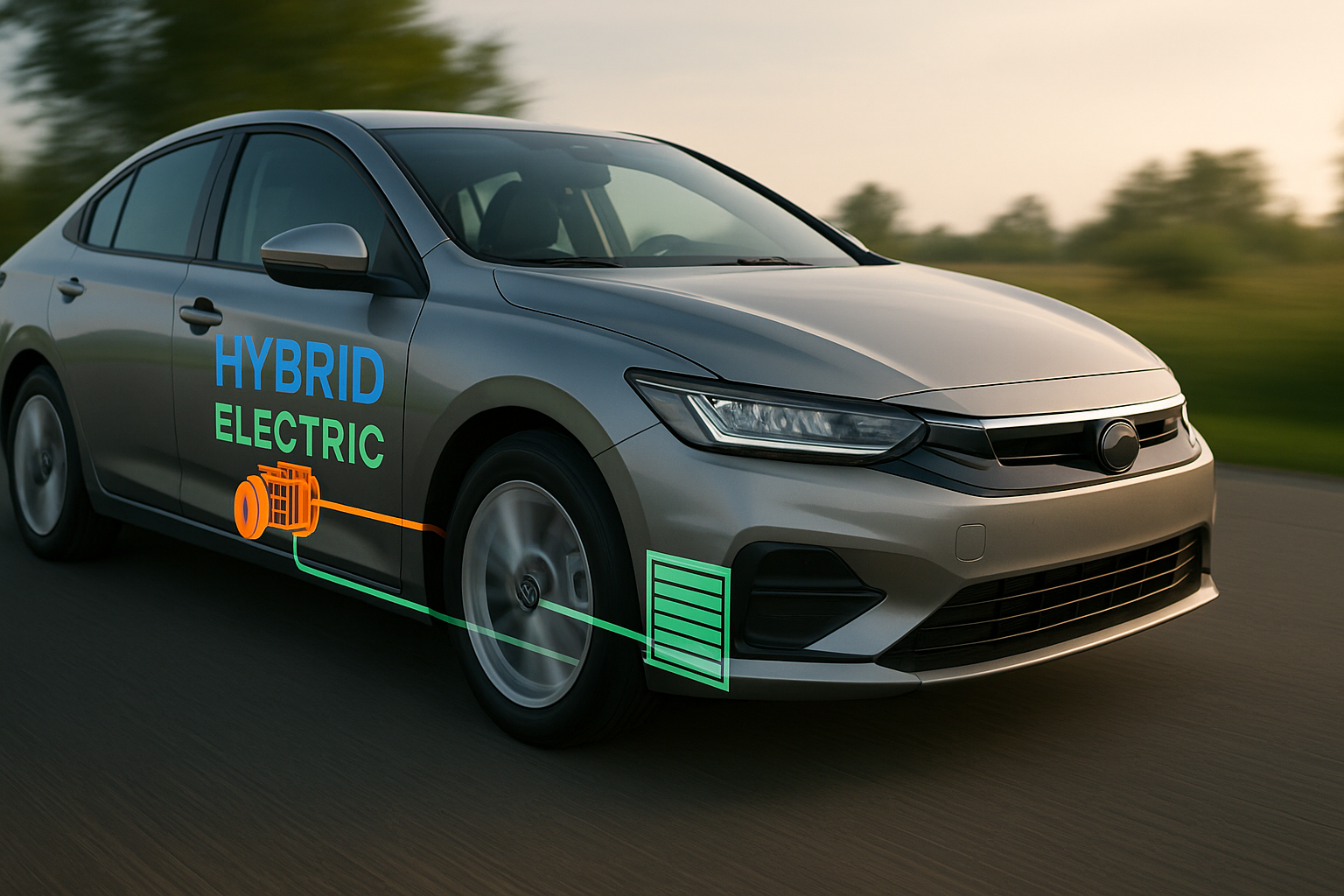Rewired for future: How AI is reshaping hybrid electric vehicle performance
Central to the operational efficiency of HEVs is the Energy Management Strategy (EMS), which determines how power is distributed between the internal combustion engine and the electric motor. Traditional EMS approaches, often rule-based or optimized using static algorithms, fall short when applied to the dynamic and unpredictable nature of real-world driving environments.

Hybrid electric vehicles (HEVs) are emerging as a vital bridge in the global shift toward low-carbon transportation, particularly in regions where charging infrastructure for fully electric vehicles remains underdeveloped. In this context, a team of Chinese researchers has published a review of how artificial intelligence (AI) is reshaping energy management in HEVs. The study underscores the urgent need for smarter, more adaptive control systems capable of responding to the complexities of real-world driving.
Published in Energies, the study titled “Artificial-Intelligence-Based Energy Management Strategies for Hybrid Electric Vehicles: A Comprehensive Review”, identifies both the growing relevance of AI-driven energy management strategies and the technical barriers impeding their broader adoption. It evaluates existing approaches to hybrid vehicle energy control, with a strong focus on methods that go beyond conventional rule-based systems.
What makes AI indispensable for hybrid vehicle energy control?
Central to the operational efficiency of HEVs is the Energy Management Strategy (EMS), which determines how power is distributed between the internal combustion engine and the electric motor. Traditional EMS approaches, often rule-based or optimized using static algorithms, fall short when applied to the dynamic and unpredictable nature of real-world driving environments.
AI, the study argues, provides the flexibility and learning capability needed to overcome these limitations. By continuously adapting to changing conditions and driver behaviors, AI-based EMS can optimize fuel economy, reduce emissions, and enhance overall vehicle performance. The research categorizes these AI strategies into four main types: knowledge-driven, data-driven, reinforcement learning, and hybrid approaches.
Each method is critically reviewed in terms of its structure, benefits, limitations, and use case relevance. Knowledge-driven systems rely on human-defined logic, making them transparent and easy to implement but limited in adaptability. Data-driven methods such as neural networks and support vector machines excel in modeling nonlinear relationships but are data-hungry and sometimes lack generalizability. Reinforcement learning stands out for its ability to learn through trial and error in dynamic settings, making it especially suitable for applications that require real-time responsiveness. Hybrid methods, which combine elements from multiple strategies, offer a pathway to achieving the robustness and adaptability required in advanced EMS design.
How do current AI strategies measure up to real-world challenges?
Despite the promise of AI in this sector, the study provides a sober assessment of the existing barriers to deployment. One of the major issues highlighted is model transferability. AI models that perform well in simulations often falter when applied to real-world driving scenarios due to unpredictable environmental variables and inconsistent human behavior.
Another significant challenge is data scarcity. Data-driven models require vast amounts of training data that encompass a wide range of driving conditions. However, collecting such comprehensive datasets is both time-consuming and resource-intensive. Without adequate data, the accuracy and reliability of the models diminish, particularly under rare or extreme scenarios.
The study also raises concerns about computational load. Many AI algorithms, especially those based on deep learning or reinforcement learning, demand significant processing power and memory, resources that are typically limited in onboard automotive hardware. This mismatch between algorithmic complexity and hardware capacity is a technical bottleneck that must be addressed before such systems can be deployed at scale.
Safety and reliability also remain central concerns. As AI becomes more involved in vehicle decision-making, its outputs must align with stringent automotive safety standards. The lack of transparency in some black-box AI models further complicates validation processes, making it difficult to earn regulatory approval or consumer trust.
What direction should future AI-based EMS research take?
To bridge the gap between laboratory success and real-world deployment, the researchers advocate for several strategic developments. First, they emphasize the importance of simulation-to-reality transfer. By using domain adaptation and generalization techniques, models trained in controlled environments could be fine-tuned to perform reliably in variable conditions.
Second, the study calls for the development of lightweight algorithms optimized for embedded systems. These streamlined models would balance performance with efficiency, ensuring that real-time decisions can be made within the constraints of vehicle hardware.
Third, the adoption of explainable AI (XAI) is recommended to make decision-making processes more transparent and trustworthy. Explainability is crucial not only for gaining regulatory approval but also for diagnostics, maintenance, and user acceptance.
Fourth, the authors highlight the need for industry-wide benchmarking and standardization. Currently, the diversity of datasets, metrics, and evaluation methods makes it difficult to compare the effectiveness of different EMS models. A standardized framework would facilitate collaboration and accelerate innovation across academia and industry.
Lastly, the study identifies hybrid models as the most promising direction for future research. By combining the strengths of rule-based logic, data analytics, and adaptive learning, hybrid approaches offer a balanced path toward creating EMS systems that are both intelligent and robust.
The research calls for a concerted effort involving academia, industry, and policymakers to transition from theoretical promise to practical solutions in the push for greener transportation.
- READ MORE ON:
- hybrid electric vehicles (HEVs)
- AI in hybrid vehicles
- artificial intelligence energy management
- AI for sustainable transportation
- how AI improves hybrid vehicle efficiency
- AI-based energy strategies for hybrid cars
- AI-enhanced power distribution in electric vehicles
- low-carbon transportation
- AI in automotive sustainability
- FIRST PUBLISHED IN:
- Devdiscourse










